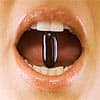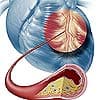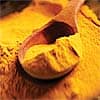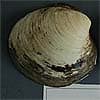
What's Hot
What's Hot
|
|
| November 2007 News flashes are posted here frequently to keep you up-to-date with the latest advances in health care and longevity. We have an unparalleled track record of breaking stories about life extension advances.
Trial of magnesium sulfate in stroke expanded
The Field Administration of Stroke Therapy-Magnesium (FAST-MAG) study is being conducted by 29 paramedic provider agencies and up to 69 Los Angeles County hospitals, and has enrolled over 250 patients so far. An additional 1,248 patients will be enrolled over the next four years. In the trial, stroke patients receive magnesium sulfate or a placebo intravenously within two hours of the event. Animal studies have found that, by dilating brain blood vessels and preventing the buildup of calcium in injured nerve cells, magnesium sulfate reduces the damage that occurs following stroke. In the pilot study, administration of magnesium sulfate by paramedics rather than hospital staff was associated with improved recovery. "Now we need to perform the large pivotal trial to determine definitively if early magnesium sulfate improves patient outcome," co-investigator Dr Sidney Starkman commented. By expanding the trial to include patients for whom "deferred consent" is provided, individuals with severe strokes that render them unable to respond adequately will be able to participate. Patients will be informed of their participation in the study as soon as they regain competency. "These are the patients who are in greatest need of a beneficial stroke treatment," co-principal investigator Marc Eckstein, MD noted. "Time is of the essence in treating acute stroke," stated lead researcher Dr. Jeffrey Saver, who is a professor of neurology at the David Geffen School of Medicine at UCLA. "By incorporating paramedics to deliver a brain-protecting agent for the first time ever in a large trial, we hope to pioneer a new, more successful era in stroke therapy." —D Dye Antidepressant extends roundworm lifespan
“We don't have an explanation for this," Dr Buck remarked. "All we can say is that if we give the drug to caloric restricted animals, it doesn't increase their lifespan any further. That suggests the same mechanism may be involved.” In a search involving 88,000 chemicals, Dr Buck's team identified 115 agents that extended the lifespan of worms. While studying one compound, additional chemicals were found, including mianserin, that extend lifespan by 20-33 percent. In humans, these compounds inhibit specific types of serotonin receptors. Serotonin is used by the cells to communicate, and is involved in the regulation of mood and appetite. Mianserin was also discovered to block the receptors for the neurotransmitter octopamine, which appears to have a complementary relationship with serotonin. “In our studies, mianserin had a much greater inhibitory effect on the serotonin receptor than the octopamine receptor,” Dr Buck observed. “One possibility is that there is a dynamic equilibrium between serotonin and octopamine signaling and the drug tips the balance in the direction of octopamine signaling, producing a perceived, though not real, state of starvation that activates aging mechanisms downstream of dietary restriction.” “Other researchers have done beautiful work using molecular genetic approaches to identify genes involved in aging,” she said. “We decided to take a chemical approach. By finding chemicals that enhance longevity, and then finding the targets of those chemicals, it may be possible to identify additional genes important in aging. In addition, the chemical approach could point to drugs suitable for testing in mammals.” —D Dye Twenty measures developed to limit humankind's deadliest diseases
Dr. Abdallah S. Daar of the McLaughlin- Rotman Center for Global Health in Toronto along with 18 coauthors report that largely preventable chronic noncommunicable diseases (CNCDs), including cardiovascular disease, several cancers, chronic respiratory conditions, and type 2 diabetes, are responsible for the greatest worldwide portion of death and disability, accounting for over 60 percent of fatalities. Despite the publicity engendered by the AIDS epidemic, there are twice as many deaths from these chronic diseases as from HIV/AIDS, malaria, tuberculosis, maternal and perinatal conditions, and nutritional deficiencies combined. "Without concerted action some 388 million people worldwide will die of one or more CNCDs in the next 10 years," co-author Nizal Sarrafzadegan predicted. "With concerted action, the number of premature deaths prevented by 2015 would total at least 36 million – a number of people roughly equal to the population of Canada, Algeria or Kenya.” Broad goals under which the 20 Grand Challenges are grouped include reorienting health systems, mitigating health impacts of poverty and urbanization, engaging businesses and communities, modifying risk factors, enhancing economic, legal and environmental policies; and raising public and political awareness. "This study has the potential to galvanize more effective action against chronic diseases,” Dr. Daar concluded. “In developing countries, many beset by infectious diseases, authorities have not resourced or thought through the policy implications of addressing these silent killers. But that's like putting out one fire in a house burning from both ends." —D Dye Dark chocolate improves coronary vascular function
Roberto Corti, MD, of the the department of Cardiology at University Hospital Zurich in Switzerland and his associates tested the effect of flavonoid-rich dark chocolate on coronary vascular and platelet function in a study involving 22 heart transplant recipients. Half of the patients received 40 grams chocolate consisting of 70 percent cocoa while the remainder received a control chocolate that did not contain flavonoids. Coronary angiography (which provides a picture of the vessels in the heart) and cold pressor testing to assess coronary vasomotion (constriction and dilation of the vessels, which, when abnormal, indicates endothelial dysfunction) were conducted before and two hours after ingestion of the chocolate. Blood samples were analyzed for biomarkers of oxidative stress and platelet function. Coronary artery diameter measurements as determined by angiography increased in participants who received the flavonoid-rich dark chocolate, but remained unchanged in the placebo group. Coronary vasomotion also improved among the group that received cocoa flavonoids, and platelet adhesion was reduced. While the serum marker of oxidative stress decreased, markers of antioxidant status increased in the dark chocolate group. "Our results suggest a short-term effect of flavonoid-rich dark chocolate in terms of inducing coronary vasodilation and improving coronary vasomotion and shear stress– dependent platelet adhesion, which results in the potential to beneficially affect atherothrombosis," the authors conclude. "This beneficial potential provides a strong rationale to further investigate the clinical effects of cocoa in cardiovascular disease." —D Dye EPA linked with physical well-being
Researchers at the University of Ontago in Dunedin, New Zealand evaluated data from 2,416 participants in the 1997 National Nutrition Survey drawn from the 1996-1997 New Zealand Health Survey, which assessed the health status and use of health services in New Zealand adolescents and adults aged 15 and up. Written questionnaires administered during interviews were used to assess physical and mental well-being over the previous four weeks. Blood samples were analyzed for serum phospholipids including arachidonic acid and the omega-3 fatty acids EPA and DHA. The researchers found an association between higher level of EPA and greater physical well-being as determined by questionnaire physical component test scores. While neither EPA nor DHA were found to be associated with mental well-being in this study, there was a correlation of the the EPA to arachidonic acid ratio observed with both mental and physical well-being. In their discussion of the findings, the authors remark that an increase in EPA would favor the synthesis of prostaglandins and leukotrienes have a lesser inflammatory effect than those synthesized by arachidonic acid, thus reducing the effects of inflammatory conditions such as rheumatoid arthritis or asthma which have a negative impact on physical well being. "The results from this population-based survey of New Zealanders suggest a strong and consistent association between eicosapentaenoic acid in serum phospholipids and self-reported physical well-being," the authors conclude. —D Dye New study finds association between vitamin D and lower endometrial cancer rates
As in the preceding studies, UCSD School of Medicine professor of Family and Preventive Medicine Cedric F. Garland, DrPH and associates utilized data made available through GLOBOCAN, a database of cancer incidence and mortality in 175 countries. By plotting endometrial cancer incidence rates according to latitude, the team was able to observe an greater rate of the disease with increased latitude, which correlates with less sun exposure and lower vitamin D levels. “In general, endometrial cancer incidence was highest at the highest latitudes in both hemispheres,” Dr Garland stated. “Even after controlling for known variables such as cloud cover, meat intake, weight, skin pigmentation and others, the association remained strong.” “This is the first study, to our knowledge, to show that higher serum levels of vitamin D are associated with reduced risk of endometrial cancer,” Dr Garland announced. “Previous epidemiological studies have focused on estrogen levels – either natural or through hormone replacement therapy – which play the major role in development of the disease, and on fat intake, which plays a smaller role. Since most women cannot control their natural levels of estrogen, and very low levels of fat intake are not acceptable to most American women, this article provides evidence that vitamin D adequacy should be considered as part of a comprehensive program for prevention of this cancer.” —D Dye The benefit of going green
“This new appreciation of the health benefits of nitrite and nitrate is ironic,” stated senior author Dr David Lefer of the Albert Einstein College of Medicine of Yeshiva University. “They’ve traditionally been regarded as toxic because they tend to form chemicals called nitrosamines, some of which are carcinogenic. But recent research has found no convincing evidence that nitrite and nitrate pose a cancer risk.” “Recent studies show that administering nitrite to animals, either intravenously or orally, can greatly limit the damage caused by a heart attack and the stress to tissue that follows due to reperfusion—the return of blood to oxygen-starved heart muscle,” Dr Lefer observed. “We wondered if feeding animals much lower levels of nitrite and nitrate—equivalent to what people can readily obtain from their diets—could also provide protection from heart-attack injury.” Dr Lefer and his colleagues added nitrite to the drinking water of a group of mice for seven days while another group received a standard diet. To mimic a heart attack, blood flow to the heart was arrested for thirty minutes followed by reperfusion for 24 hours. When the animals' hearts were examined, those that received nitrite had 48 percent less damage than animals that did not receive the compound. Nitrite and the related compound nitrate play a role in the production of nitric oxide, which helps relax the blood vessels. In an experiment involving nitrate, which converts in part to nitrite, a benefit similar to the first experiment involving was found. “Our study suggests that building up nitrite stores in heart muscle could spell the difference between a mild heart attack and one that causes lasting heart damage or death,” Dr Lefer concluded. —D Dye Grape polyphenols slow Alzheimer's plaque formation
Alzheimer's disease afflicts an estimated five million Americans, a number that is expected to more than double by 2050. Delaying the onset of the disease by just five years could cut the number of projected cases in half. Dr Lap Ho of Mount Sinai School of Medicine presented his research team's finding that polyphenols derived from Cabernet Sauvignon and Concord grape juice decrease the generation and accumulation of beta-amyloid peptides in laboratory models of Alzheimer's disease. Beta-amyloid peptides form plaques in the brains of Alzheimer's disease patients and are believed to be responsible for the neurodegeneration that occurs. In previous research conducted at Mount Sinai it was found that moderate Cabernet Sauvignon consumption prevented Alzheimer's-type neuropathology in mice and reduced cognitive decline. Studies in humans have associated drinking red wine with a reduction in the risk of developing Alzheimer's disease dementia, and drinking unadulterated fruit juice with a delay in the onset of the disease. Dr Giulio Pasinetti, who is the director of Mount Sinai School of Medicine's newly opened Center for Research in Alternative and Complementary Medicine in Alzheimer’s disease and lead investigator of the research program in polyphenolics stated, “This grape polyphenol research is preliminary, but very encouraging. The results show the potential protective role which nonalcoholic, polyphenol-rich Concord grape juice may play in maintaining long term cognitive health.” Ongoing studies at the Center will provide more information on polyphenols' role in Alzheimer's disease prevention or treatment. “Our goal is to learn which compounds are bioactively available to reach the brain and exert a benefit,” Dr Pasinetti added. November is National Alzheimer's Awareness Month. —D Dye Green tea fights sepsis
"Clinically, even if we could save five percent of patients, that would be huge,” Dr Wang stated. “In this study, we saved 25 percent more animals with the green tea.” Dr Wang's team discovered that a pro-inflammatory cytokine called HMGB1 is expressed in the late stages of sepsis, and that green tea (Camellia sinensis) blocks bacterial endotoxin-stimulated HMGB1 release. In the current research, they found that the green tea compound epigallocatechin-3-gallate (EGCG) dose-dependently reduced HMGB1 release in cell cultures, even when administered two to six hours after the cells were stimulated with bacterial endotoxin derived from E. coli. When mice in whom sepsis was induced were given EGCG in a dose equivalent in humans to that provided by 10 cups of tea, 82 percent of the mice survived compared with 53 of those who did not receive the compound. "The doses of EGCG given to septic mice are much higher than those readily available in humans after ingestion of 1 cup of green tea," the authors observe. "However, concentrated forms of decaffeinated green tea extracts or purified EGCG are commercially available, and an individual does not need to drink multiple cups of tea everyday to enjoy the health benefits that green tea confers." —D Dye Fasting association with coronary heart disease reduction
Dr Horne utilized data from participants in the Intermountain Heart Collaborative Study, which included men and women who had undergone coronary angiography between 1994 and 2002. Sixty-six percent of the non LDS participants demonstrated coronary artery disease, defined as a narrowing or blockage of at least 70 percent in one or more artery, compared with 61 percent of LDS members. “When we adjusted for smoking, or looked just at the nonsmokers, we still found a lower rate of CAD in people having an LDS religious preference,” Dr Horne said. “We thought this was very interesting, so we devised a survey about other behaviors associated with LDS that might bring a health benefit.” In the study's second part, 515 participants who underwent coronary angiography between 2004 and 2006 completed a questionnaire concerning religious preference and the adoption of practices advised by the LDS church. Fifty-nine percent of those who reported fasting experienced a 70 percent or greater blockage, compared with 67 percent of nonfasters. “Fasting was the strongest predictor of lower heart disease risk in the people we surveyed. About 8 percent of the people who fasted did not express an LDS religious preference, and they also had less coronary disease,” Dr Horne stated. “When you abstain from food for 24 hours or so, it reduces the constant exposure of the body to foods and glucose. One of the major problems in the development of the metabolic syndrome and the pathway to diabetes is that the insulin-producing beta cells become desensitized. Routine fasting may allow them to resensitize — to reset to a baseline level so they work better.” —D Dye Curry compounds combat cancer
Due to the reduced bioavailability of orally consumed curcumin, Hiroyuki Shibata, MD and colleagues from Tohoku University in Sendai, Japan sought to improve the compound's therapeutic potential. They developed two analogues: GO-Y030 and GO-Y031, which show greater potency and bioavailability than natural curcumin. Structural data on the molecules was published in the May, 2006 issue of Molecular Cancer Therapeutics “Our new analogues have enhanced growth suppressive abilities against colorectal cancer cell lines, up to 30 times greater than natural curcumin,” stated Dr Shibata, who is an associate professor in the Department of Clinical Oncology at Tohoku University's Institute of Development, Aging and Cancer. “In a mouse model for colorectal cancer, mice fed with five milligrams of GO-Y030 or GO-Y031 fared 42 and 51 percent better, respectively, than did mice in the control group.” The molecules have the ability to suppress genes that promote cell growth, including those which express the procancerous protein beta-catenin. They also induce apoptosis (programmed cell death). “In addition to colorectal cancer, the beta-catenin-degrading abilities of these molecules could apply to other forms of cancer, such as gastric cancer,” Dr Shibata noted. “Like curcumin, these analogues also down-regulate a number of gene products, such as NF-kappa B, ErbB2, K-ras, that are also implicated in breast, pancreas and lung cancers among other diseases.” “In addition to their chemopreventative abilities, these molecules might also form the basis of a potent chemotherapy, either alone or in combination with other modes of therapy,” said Dr Shibata. —D Dye Humble clam claims World's Oldest title
Paul Butler and James Scourse of Bangor University School of Ocean Scientists in Wales located the quahog clam, Arctica islandica, in the cold waters off Iceland's north coast. The scientists' data collection cruise was part of the EU MILLENNIUM project intended to investigate climate change over the past ten centuries. By examining annual growth lines in the clam's shell, postdoctoral scientist Dr Al Wanamaker was able to determine its age in a manner similar to counting tree rings. The clam was found to be 405 to 410 years old. Unfortunately, the clam was killed in the process of examining it. "Al and Paul rushed up to my office to announce that they had found a record-breaker,” research team member Chris Richardson recalled. Reassessment confirmed that the clam's age was 30 years older than the unofficial title holder, another Icelandic clam claimed to be 374 years of age. It is quite possible that there are yet undiscovered older living members of the Arctica species. The researchers are eager to find out why these clams live to such advanced ages. They believe that the clams may have evolved defenses against aging's destructive processes. "If, in Arctica islandica, evolution has created a model of successful resistance to the damage of aging, it is possible that an investigation of the tissues of these real life Methuselahs might help us to understand the processes of ageing," Richardson stated. —D Dye |

 A pilot trial of magnesium sulfate administered by paramedics to
A pilot trial of magnesium sulfate administered by paramedics to  The November 22, 2007, issue of Nature reported the finding of Linda B. Buck of Howard Hughes Medical Institute and her colleagues, that giving the antidepressant mianserin to the roundworm C. Elegans extends lifespan by 30 percent. The mechanism of action appears to be the same as that of
The November 22, 2007, issue of Nature reported the finding of Linda B. Buck of Howard Hughes Medical Institute and her colleagues, that giving the antidepressant mianserin to the roundworm C. Elegans extends lifespan by 30 percent. The mechanism of action appears to be the same as that of  "Promote healthy lifestyle and consumption choices through effective education and public engagement" and "Increase the availability and consumption of healthy food" are among 20 Grand Challenges developed by a panel of eminent health researchers and organizations which, if overcome, would help to reduce the most fatal diseases that afflict humanity. The consensus was published in the November 22, 2007 issue of the journal
"Promote healthy lifestyle and consumption choices through effective education and public engagement" and "Increase the availability and consumption of healthy food" are among 20 Grand Challenges developed by a panel of eminent health researchers and organizations which, if overcome, would help to reduce the most fatal diseases that afflict humanity. The consensus was published in the November 22, 2007 issue of the journal  The November 20, 2007 issue of the American Heart Association journal
The November 20, 2007 issue of the American Heart Association journal  The November, 2007 issue of the
The November, 2007 issue of the  The November 16, 2007 issue of the journal
The November 16, 2007 issue of the journal  An article appearing online the week of November 12, 2007 in the
An article appearing online the week of November 12, 2007 in the  A presentation on November 6 at Neuroscience 2007 in San Diego revealed more information on the potential of grape polyphenols in the fight against
A presentation on November 6 at Neuroscience 2007 in San Diego revealed more information on the potential of grape polyphenols in the fight against  A report published online in
A report published online in  The American Heart Association’s Scientific Sessions 2007 was the site of a presentation by Benjamin D. Horne, PhD, MPH of the University of Utah concerning the finding that once a month fasting practiced by members of the Church of Jesus Christ of Latter-Day Saints (LDS) is associated with a reduction in the rate of
The American Heart Association’s Scientific Sessions 2007 was the site of a presentation by Benjamin D. Horne, PhD, MPH of the University of Utah concerning the finding that once a month fasting practiced by members of the Church of Jesus Christ of Latter-Day Saints (LDS) is associated with a reduction in the rate of  Research presented on November 4, 2007 at the American Association for Cancer Research Centennial Conference on Translational Cancer Medicine revealed that molecular variations of curcumin, a compound in the spice turmeric that has shown
Research presented on November 4, 2007 at the American Association for Cancer Research Centennial Conference on Translational Cancer Medicine revealed that molecular variations of curcumin, a compound in the spice turmeric that has shown  Forget about the previous 220 year old American Guinness Book longevity record holder (who happened to be a clam)--the newest title of World's Oldest now goes to another bivalve found in Iceland that may have been as old as 410 when examined by scientists.
Forget about the previous 220 year old American Guinness Book longevity record holder (who happened to be a clam)--the newest title of World's Oldest now goes to another bivalve found in Iceland that may have been as old as 410 when examined by scientists. 